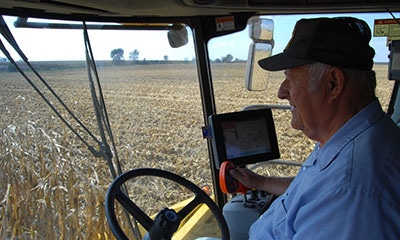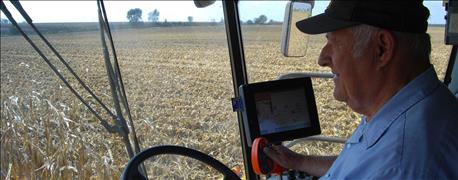October 17, 2016

You may have silos on your farm to store grain, but you may not have heard of a data silo. Much like grain in a silo is separated from outside elements, the data stored in a data silo is isolated from the rest of your farm’s metrics. Data silos occur because different data is collected with different goals, purposes and methods. It may seem like there is no reason to connect regulation data and yield data, or irrigation data and pricing data. But you can benefit from breaking down your farm’s data silos and connecting data across the farm for a singular, unified picture of your business.

CONNECT DATA: AgriEdge Excelsior is a program from Syngenta that combines total farm management with recordkeeping software and personalized, on-farm support to take the guesswork out of production and profit potential. From determining a cost-benefit analysis to product selection, this program helps you simplify complex challenges.
Today’s farm machinery collects a lot of useful data
All aspects of our lives are increasingly more connected. The line between our digital and physical worlds is becoming more blurred. For example, last year, Amazon released its Dash Button that allows you to order more of your favorite products, like coffee or laundry detergent, through the online website with the push of a literal button.
Your farm is no exception. From tractors to planters, from sprayers to sorters, a large percentage of today’s farm machinery collects data in the physical world that can be transferred online. However, according to John Fulton, professor of ag engineering at Ohio State University, at the end of 2014, 80% of the data being generated by farm machinery in the U.S. still resided on those machines. This means that much of this data cannot be analyzed and used to its full potential by the grower.
Andy Johnson, a grower and retailer farming at Osage, Iowa, recognized that disconnect. “I was pretty good at looking at data from a whole-farm basis,” he says. “But I wanted to improve my financial recordkeeping and break down the data field-by-field so I could try to reduce cost-per-acre without reducing yield and improve the whole farm’s overall performance.”
Connecting the data dots: “big data” vs. “smart data”
Collecting and using data in individual, siloed functions is called “big data.” But connecting all the data dots to analyze and make decisions as a unified farm is “smart data.”
AgriEdge Excelsior from Syngenta is a whole-farm management program. For more than 15 years, this program has helped growers maximize and sustain their return on investment. The secure, cloud-based farm management software within the AgriEdge Excelsior program is called “Land.db” and it helps growers digitally organize data across devices and assists in making informed decisions using your data. This software does not store data in a silo. It connects and analyzes all the farm data seamlessly.
Review every field’s financial record on a standalone basis
Johnson, the Iowa farmer who joined the AgriEdge Excelsior program about two years ago, says it’s been helpful to review every field’s financial record on a standalone basis. He can then connect the dots between his inputs and his results at the end of the season to analyze his whole-farm management strategy.
“The AgriEdge Excelsior program has helped me make better management decisions,” says Johnson. “I use it for preplanting budgeting, to determine what my breakeven is, and as a tool for evaluating products. It’s helped me to make better purchasing decisions and better manage my expenses.” He adds, “Looking at your farm as a complete, data-driven picture influences your decisions to minimize costs and improve profits.” For more information visit AgriEdge Excelsior.
You May Also Like




